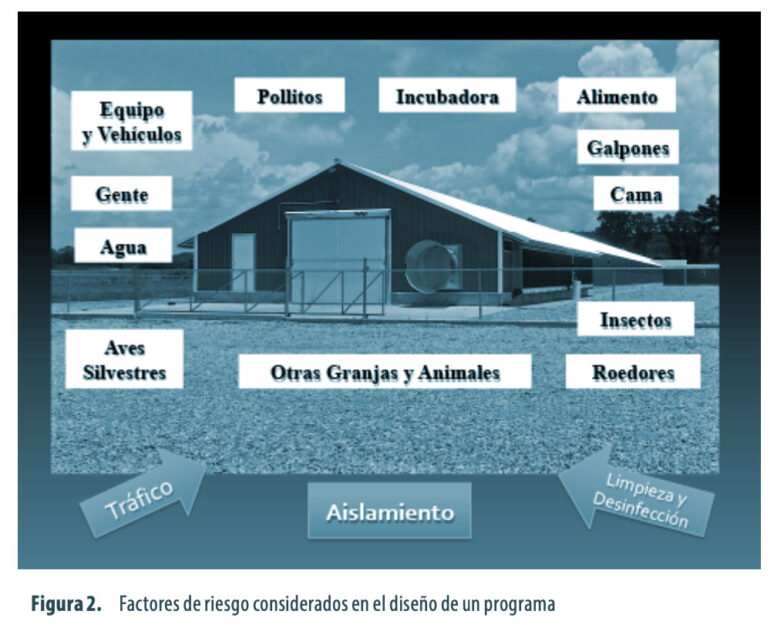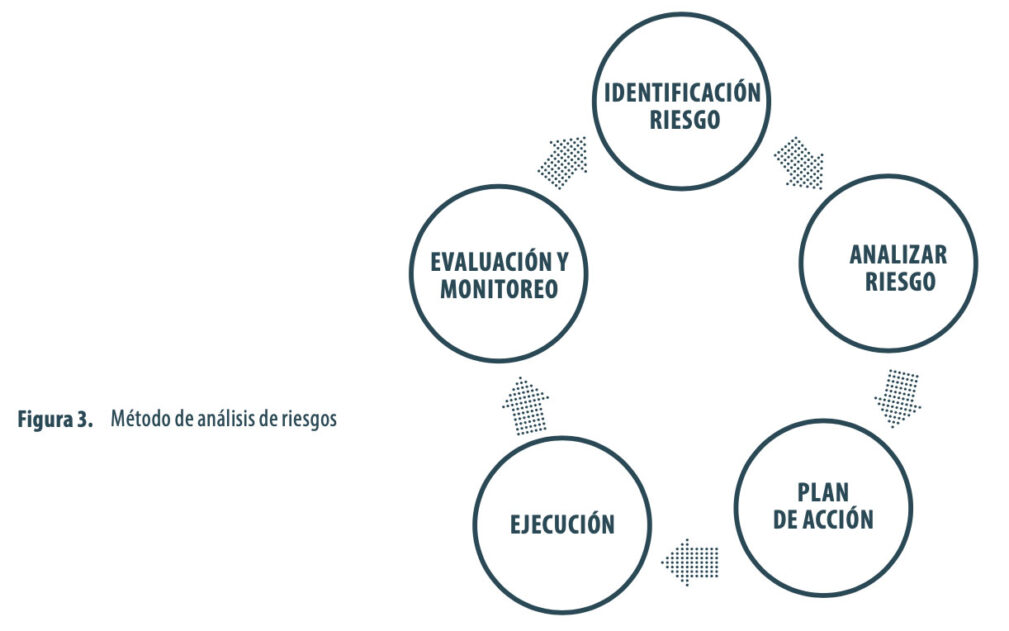A. Gregorio Rosales, private poultry consultant, and LPN Technical Director, was in charge of the conference about “Biosecurity, An Essential Investment” at the LPN Congress 2018.
The poultry industry continues to thrive thanks to the increasing demand for poultry products while improving its productivity through the continuous incorporation of technological advances in genetics, management, nutrition, and housing. As part of progress, protecting the health and welfare of birds continues to be a priority so that producers can achieve their objectives and be profitable in the face of market evolution and the influence of global economies.
One of the most recent challenges is the pressure to reduce or dispense with the use of antibiotics through constant improvements in management methods and disease control using new strategies and alternative products.
Another challenge is the constant threat of emerging or epidemic diseases that can not only cause adverse effects on the productivity of companies but also on their ability to meet increasing demands from local and international consumers.
Consequently, poultry farming needs to strengthen biosecurity as the first and most important defense strategy to prevent the entry and transmission of diseases.
Biosecurity is an Investment
Biosecurity is a set of norms and production practices designed to prevent pathogens’ entry and subsequent spread. As shown in Figure No. 1, biosecurity serves as the foundation for producers to protect the health and well-being of flocks, obtain the best possible production yields, and ensure optimal return on invested capital. In this way, biosecurity is an essential investment to guarantee poultry companies’ productivity, competitiveness, and sustainability today and in the future.
In general terms, a biosecurity program has the following objectives:
- Avoid losses due to diseases and lower production yields
- Reduce costs due to the use of antibiotics and other measures to mitigate the impact and risk of disease transmission
- Ensure uninterrupted supply of products
- Comply with quality and food safety requirements
- Satisfy the demands of consumers in local and international markets
- Maintain and increase the company’s market share
Based on the above, biosecurity has ceased to be a purely technical area to become the foundation of modern companies that produce healthy, nutritious, and reliable poultry products for the human population.

Biosecurity and Key Yield Parameters
Like many other industries, poultry companies know that they can’t manage what you don’t measure (W. E. Deming and P. Drucker) and often allocate resources and have tools to collect and analyze key performance parameters systematically. This information is of great value for evaluating results, making comparisons, setting objectives, and making decisions.
Following this mechanism, proposals to establish or improve a biosafety program will have higher priority when accompanied by data (preferably from the company) showing diseases’ potential or historical impact on these parameters.
The economic impact of diseases on flock viability, feed conversion, weight gain, kilograms of meat produced, number of eggs and chicks per hen housed, etc., provides a convincing argument to justify investments in the area of biosecurity. This strategy also establishes an objective relationship between the benefits of biosafety under the conditions, the economic reality, and the company’s objectives.
Design and Establishment of the Program
Identifying risk factors that can result in the introduction of diseases is the first step in designing and establishing a biosecurity program for a specific company or farm. Risk factors commonly used to design a program are shown in Figure 2.
Likewise, it is essential to establish isolation procedures (avoid contact with other flocks or backyard birds), cleaning and disinfection (before the entry of vehicles, equipment, and work tools), and control of the traffic of people and vehicles.

In poultry production, the use of risk analysis to evaluate production processes and identify their strengths and weaknesses is increasingly frequent. This is a beneficial method for assessing the biosecurity program and identifying opportunities for improvement. However, this task must be carried out continuously by the personnel responsible for the program or periodically with the assistance of specialized external auditors.
As shown in Figure 3, once a risk factor (new or emerging) is identified, its impact must be analyzed and followed by the planning and execution of corrective measures. Ideally, the effectiveness of these actions should be subject to some form of evaluation or verification.

The following components are required for the establishment and implementation of an effective biosecurity program:
- 1. Conceptual (farm location, size, number of ages, isolation from other farms and backyard birds).
- 2. Structural (design of entrance modules, poultry houses, wild bird and rodent-proof sheds, doors, and perimeter fences).
- 3. Operational (changes of clothing and footwear, showers at the entrance and exit, cleaning and disinfection of facilities and equipment)
- 4. Cultural (commitment, training, recognition, audits)
Figure 4 illustrates the close relationship between these components and their correct execution to guarantee the program’s success.
Understandably, the program and its components have to be consistent with the objectives and resources of each company. Generally, the best biosecurity program adheres to basic principles, is designed with realistic goals, and uses available resources for continuous improvement.

Culture and the Human Factor
Biosecurity standards are often perceived as “costly, inconvenient, and dogmatic,” These attitudes negatively influence culture development, commitment, and program delivery.
This cultural barrier can only be overcome through good communication, education, and goal setting for every employee in conjunction with company goals.
Undoubtedly, the success of a program depends on the awareness of all employees in the importance of it to achieve their objectives, have employment stability, and the possibility of improving their quality of life.
To achieve this, it is necessary to establish employment requirements, training sessions (at the start of employment and at least annually), contracts defining work responsibilities, the obligation to comply with biosafety standards at all times, and the ramifications of failure to comply or notification of violations. In this way, biosecurity must be an essential part of the culture that guides a company’s decisions and daily operations.
Developing a biosafety culture requires leadership, teamwork, and good communication. The adoption and commitment to it can also be promoted through recognition and incentives for employees and producers under sharecropping systems to reward and make public examples of dedication and contributions or ideas for its improvement.
Once a program has been developed and infrastructure and resources invested, it should not be assumed that all requirements and procedures are met daily and without error.
Therefore, it is beneficial to carry out internal audits (and with the assistance of third parties) to evaluate the execution of the program and detect operational and structural deficiencies. In addition, audits are the best mechanism for identifying areas that can be improved through training, adjustments to procedures, and the need for facility modifications.
Active and Passive Monitoring
As the poultry industry advances and faces greater demands, it is increasingly dependent on the support of diagnostic laboratories. They perform routine tests to determine the health status of flocks, assess post-vaccination immunity levels, and confirm the effectiveness of the biosecurity program. These activities constitute active monitoring.
In many countries, routine health monitoring is required by official programs for the certification of flocks and their progeny as free of certain diseases.
Likewise, using rapid diagnostic methods, laboratories can detect early the introduction of diseases such as avian influenza, Newcastle disease, and mycoplasmosis. This requires the collection of samples following the appearance of clinical signs (increased mortality and decreased production) or the identification of specific lesions.
This type of surveillance or passive monitoring is of vital importance to respond immediately and initiate, if necessary, the execution of contingency measures (such as quarantines or traffic controls) to prevent the transmission of diseases to other farms.
There is no 100% infallible biosafety program. Therefore, laboratory results verify its effectiveness and provide critical information to execute timely actions to protect the company.
